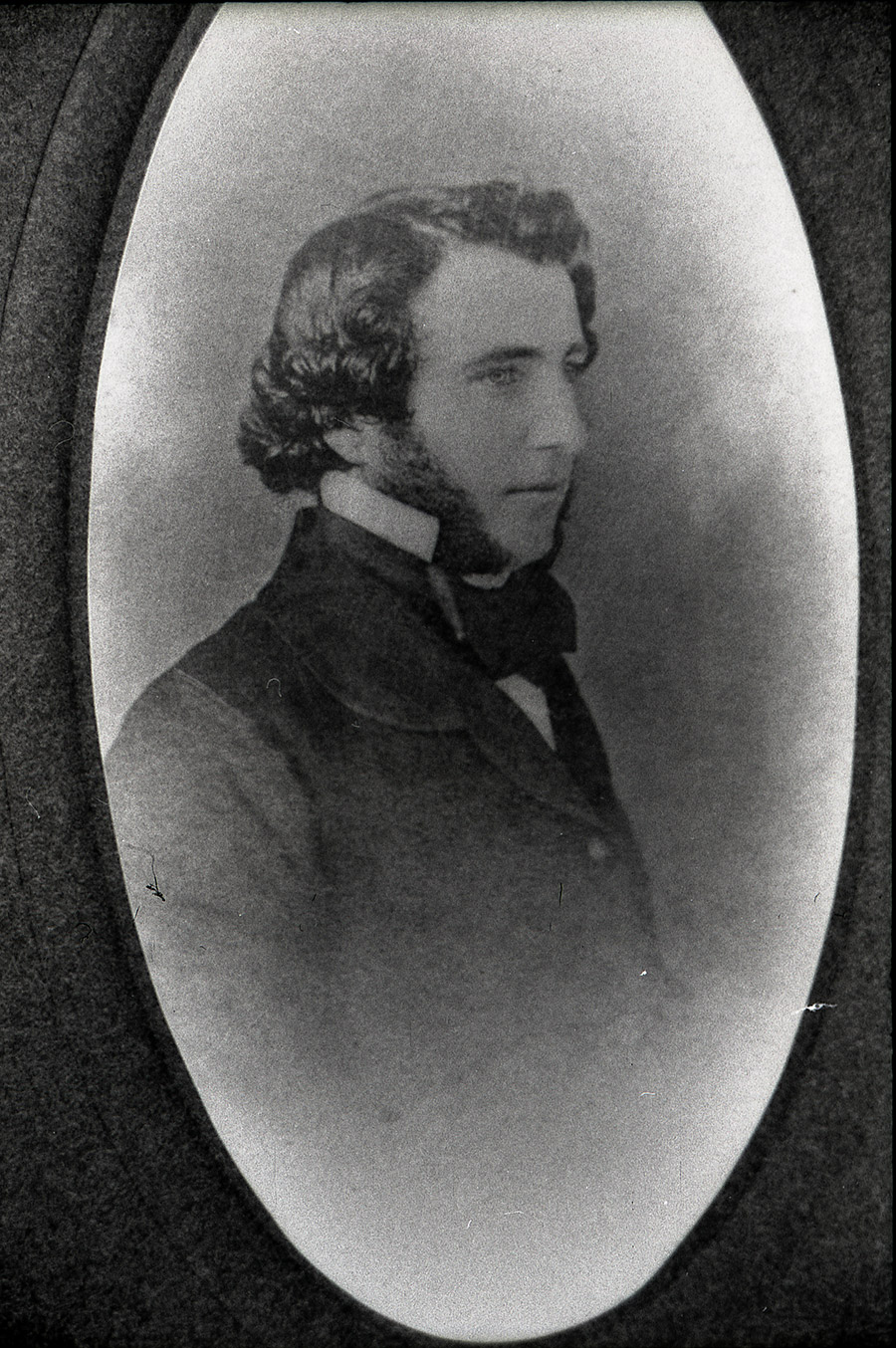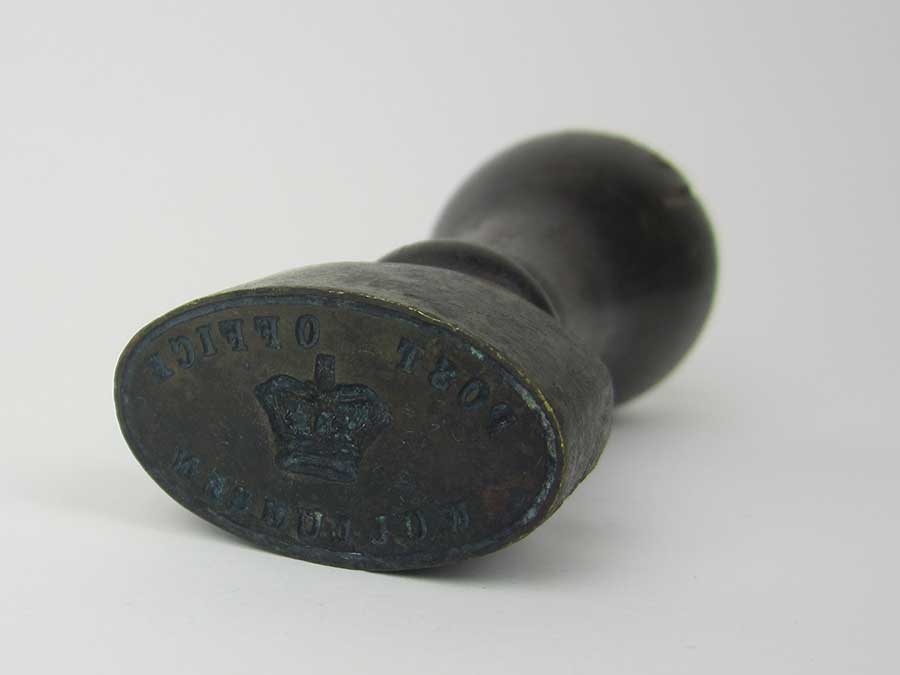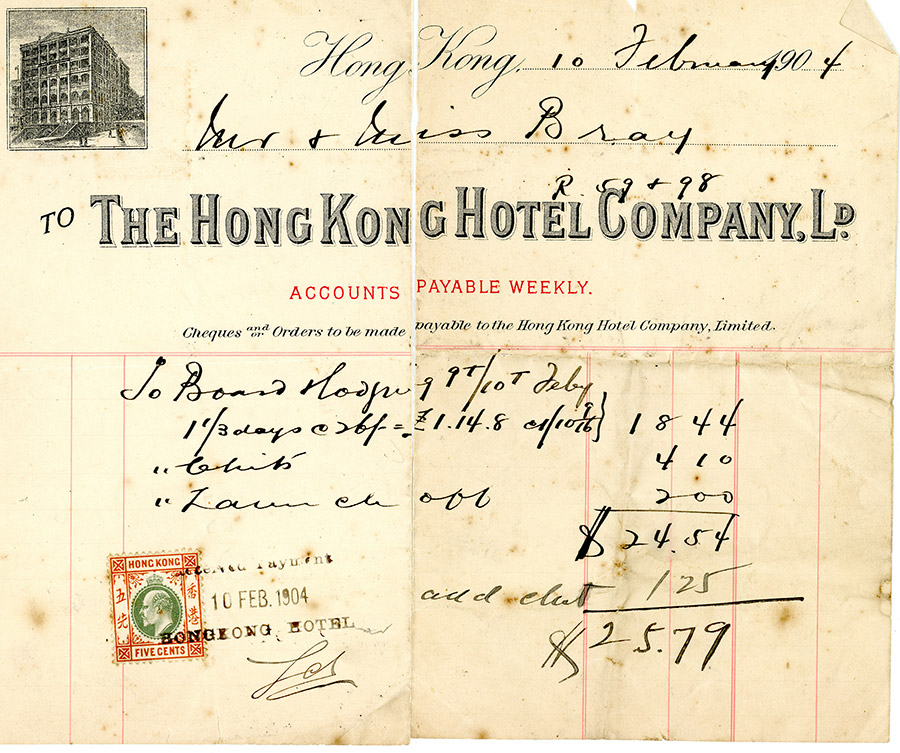Joshua Bray (1838-1918)
Joshua Bray, one of the first Europeans to select land near Murwillumbah, at Kynnumboon. Tweed Regional Museum Collection TH151-21.
When Joshua Bray died in 1918 his obituary referred to him as the King of the Tweed,
'the first magistrate, first C.P.S.[Clerk of Petty Sessions], first postmaster. The man who crossed the Richmond ranges, bringing cattle to the Tweed, who blazed the track… This was the man the old hands loved to talk of – athletic, venturesome, shrewd, far-seeing – the true type of the pioneer.'
Joshua Bray was born in Appin, New South Wales on 3 July 1838, the sixth child of John and Charlotte Bray (nee Storer). Two years later the family moved to “Denfield” three miles from Campbelltown. Joshua received an elementary education at St. Peter’s Parochial School in Campbelltown.
In 1855 Joshua’s father took up land on the Tumut River to raise cattle on his station “Brungle”. Joshua and his brothers ran the property with Joshua making many trips droving cattle to the saleyards in Campbelltown.
In 1861, brothers Frank and Edward Nixon took up a selection on Brungle Creek and the following year their parents George Russel and Rosalie Adelaide and their three younger brothers and three sisters arrived, including 16 year-old Rosalie Gertrude Nixon, who would later become Joshua’s wife.
The Nixon family had lived in Europe and the UK and had been educated by their father, an MA and Honours graduate from Cambridge University. The family had a great interest in literature and the arts and could speak both French and German. Joshua and his brother James met the Nixons at this time and provided valuable support and advice to the brothers, Frank and Edward.
On the Tweed

Samuel Gray, c.1870. TH151-17
Samuel Gray, Joshua's brother-in-law, purchased the lease on a run of 16,000 acres in the Tweed called “Upper Walumban” in 1862 and offered Joshua a partnership which he accepted. Joshua set sail on the Agnes Irving from Sydney on June 22nd 1863 and arrived at the Clarence River on the 24th.
Accompanied by Tom Boyd, Joshua rode along the beach from the mouth of the Richmond to Ballina and then on to a small settlement of sawyers at Terranora near the mouth of the Tweed River. He was then guided to the North Arm, where Samuel Gray had established his run, by a local Aboriginal man, Wollumbin Johnnie.
By 1864 Joshua and Samuel Gray were involved in cedar felling at Tyalgum as well as clearing and draining land and planting crops and were using the labour of local Aborigines for these enterprises. In February 1864 Joshua writes to Gertrude Nixon telling her of the plantings done by him in the previous months, including tobacco, sugar cane, corn, arrowroot and vegetables and goes on to say,
'This place is beginning to look more like a civilised place – the garden looks nice, the trees are growing well, the grape vines, etc are doing well. I have put up several buildings & as there is no bark here, I have to shingle them. I put up a nice boat-house, with a windlass for hauling the boat out of the water and out of the sun. I also have built a shed for the blacks to eat under. It is too hot for them to eat out in the sun.'
In need of bullocks, Joshua set out in July 1864 to buy cattle from Tunstal Station on the Richmond River and became the first man to drive cattle over the ranges from the Richmond to the Tweed. With the help of two Aboriginal boys, Grasshopper and Abraham, he drove the cattle to Walumban via Nimbin Rock, the Nightcap Ranges and Kunghur. In a letter to Gertrude in August 1864 Joshua describes the return journey over rugged terrain as “very unpleasant”.
This situation worsened when only 20 miles from home they became stranded due to torrential and continuous rain which forced them to halt on a ridge for five days. Their limited provisions were supplemented with yams and a snake caught by Grasshopper.
Rosalie Gertrude
In 1865 Joshua returned to Tumut and became engaged to Rosalie Gertrude Nixon. The wedding took place in Armidale on 15 May 1866. After the engagement Joshua employed a carpenter in Sydney who returned to the Tweed with him to build Kynnumboon, a pit-sawn timber house about a mile up river from the Gray’s home.
Between 1866 and 1888 fourteen children were born to Joshua and Gertrude of which 13 survived:
- Nina Rosalie 1866-1922
- Eveleen Gertrude 1868-1952
- Florence Mary 1870-1938
- Edward Llewellyn Russell 1871-1922
- Reginald Norman Russell 1873-1952
- Ethel Charlotte Lucy 1876-1958
- Winifred Anna Gertrude 1877-1896
- Mary Shirley 1879-1918
- John Frank Russell 1881-1959
- Percy Vaughan Russell 1881-1962
- Dorothy Frances 1883-1952
- Marjorie Helen 1885-1951
- Clive Russell 1888-1917
Public duties

Rubber stamp used by Joshua Bray, the first post master in the Tweed Valley, at the Wollumben (Kynnumboon) Post Office, 1866-1868. TH2003.80
Joshua Bray became a prominent community leader and held many public offices and Kynnumboon became a focal point for the settlers scattered around the district. Joshua had first been appointed a Magistrate of the Colony in 1862 when he was still living and working in Tumut and when the first Post Office was established in the Tweed in 1866 Joshua was appointed the first postmaster, a post he held until 30th April 1876.
Prior to this Joshua had used Aboriginal men to carry mail to and from Ballina. He later organised horseback mail deliveries between Wollumben and Casino and another between Wollumben and Nerang Creek in Queensland. A small room on the west side of Kynnumboon had become the Post Office. Joshua’s daughter Florence recalls,
'My father kept the first post office on the Tweed in a little verandah room off our back verandah. A small window about 12 inches by 9 inches was cut in the wall, through which all letters were handed to those who came for them and with a small slit below where letters could be posted. My father or mother sorted and made up the mails.'
In 1870 Joshua was appointed Police and Stipendiary Magistrate for the town of Cudgen and Murwillumbah and Police District of Tweed River. When he became Magistrate a Court of Petty Sessions was held at Cudgen but Joshua appealed for a new court house to be erected at Murwillumbah which eventuated in 1877.
Joshua Bray also officiated as Justice of the Peace (1870-1875), Gold Warden and Coroner and from 1875 he took on the roles of Crown Land Agent and Clerk of Petty Sessions (previously held by his brother James Bray), Protector of Aborigines and in 1873 was appointed as a member of the Public School Board for Murwillumbah .
In November 1885 he was appointed a Warden of the Clarence and Richmond Mining District and to issue Miners’ Rights, Business and Mineral Licenses and in 1889 he was appointed District Registrar in Bankruptcy for the district of the Tweed River .
As well as these public offices Joshua Bray was interested in road construction and was involved in the building of Old Ferry Road and the Tumbulgum road along the west bank of the Tweed River and in 1869 had an area of 161 acres on Hospital Hill in the present town of Murwillumbah gazetted as a water reserve. This later facilitated plans for the development of the village of Murwillumbah.
Even before Joshua took up official offices his sense of public duty was apparent. In a letter he wrote to Gertrude Nixon on 29 July 1863, he said that,
'I teach Paddy Smith’s children for two hours three times a week, a boy and two girls – they can just read and write. I don’t like to see them brought up in a state of barbarism. On Sundays I teach them their catechism, and make them read the Testament for an hour'
Joshua performed many of his public duties in his office at Kynnumboon, and on Sundays the sitting room was used for church services and Gertrude conducted Sunday school for all the children regardless of denomination. Each year on the Queen’s Birthday, May 24th, Joshua distributed blankets to every Aboriginal man, woman and child in the district.
Medical and dental treatment
Throughout the 1870s before any qualified medical help was available at the Tweed, Joshua tended to the community’s medical and dental needs with only the help of a medical book and a first-aid kit. This included treating cuts, broken bones, snake bite, administering vaccinations and pulling teeth.
Sugar Cane
Diary entries for Bray and Gray in 1865 record that following the success of the initial cane planting in 1864 they began planting more sugar cane in February 1865 and continued throughout 1865 to prepare ground for more cane. By August 1, 1865 Joshua Bray and Samuel Gray had pressed some cane juice and tested it .
They constructed a primitive mill to produce their first sugar, however, the according to James Bray’s diary entries for November 1868, Joshua and Gray were still trying to make sugar successfully and in 1969 Mr John Robertson, New South Wales Premier visited the Tweed at the invitation of Samuel Gray.
Mr Robertson visited Kynnumboon and Gertrude Bray’s diary entry for August 6th records that:
'Our “Illustrious” visitors arrived about two o’clock. … Saw the sugar works and then marched down to dinner.'
By the late 1860s substantial crops of sugar cane were being planted by Joshua Bray on his property at Kynnumboon, Gray on his property on the North Arm and Michael Guilfoyle at Cudgen.
This period is considered to mark the beginning of the cane industry in the Tweed Valley. By 1873 The Queenslander published an article on the Tweed District which said that “Mr Gray will have over thirty acres of cane planted this season and with last year’s planting will make a total of some sixty acres or more, almost enough to start a mill with… ”
In the early 1870s Bray and Gray had imported a mill of English and Scottish machinery; however, in 1973 a mill had been established at Tumbulgum which operated successfully until the CSR mill was established at Condong in 1880.
Aboriginal people
When Joshua arrived on the Tweed there were about 80 or 90 Aborigines camped about 100 yards from the house. Joshua established good relations with them and took a great interest in their language and culture. In a letter to Gertrude Nixon in 1863 he says,
'I have learnt their language pretty well, and can converse with them in their own tongue…'
He also made a careful study their customs and compiled and had published extensive lists of Aboriginal words and phrases and published further recollections in an article entitled Tribal Districts and Customs in 1901.
Joshua Bray used the labour of the local Tweed Aboriginal men and women to help with land clearing, draining and cultivating crops as well as with the cedar getting and told Gertrude Nixon,
'I have sixteen or seventeen blacks at work every day – they can split timber mortice posts, pull the boat – trench the ground – any anything I put them at… in fact, they do nearly all my work…'
They were given rations and clothing and time off to hunt and conduct ceremonies.
Travel

Receipt from a hotel in Hong Kong, visited by Joshua and his daughter Ethel in 1904. MUS2014.38.16
Joshua Bray was active in public duties until well into the 1890s but at this time began to withdraw from public life to devote more time to other activities including overseas travel.
In 1902 Joshua and Gertrude sailed from Sydney on the Konigen Louise for an extended trip to Britain and the Continent. In January 1904 Joshua and his daughter Ethel sailed on the Changsha on for Hong Kong, China and Japan arriving back in Brisbane on the Changsha from Hong Kong on Friday 25 March 1904 .
In January 1909 Joshua and Gertrude sailed on the Ormuz on another overseas trip with their daughters Ethel and Marjorie and Gertrude’s sister Nina Spasshat, again to Britain and Europe arriving back in November of that year. Joshua had two other holidays in the first twelve years of the twentieth century, one to New Zealand and the other to Tasmania, both with Gertrude.
Later life
Joshua Bray withdrew from public life and as his health declined he was seen about town less and less frequently. After suffering two strokes he died at Kynnumboon on 20th February 1918 and is buried at the old cemetery in Murwillumbah. Gertrude lived on at Kynnumboon until her death on June 10th 1938 and is buried beside her husband.
In accordance with Joshua Bray’s wishes there was no hearse at his funeral, the casket was conveyed to the cemetery on a lorry draped in black. The cortege was of considerable length with family, friends and many dignitaries present to pay their last respects to the man who many considered a man of action who helped the Tweed grow more than any other, almost the last of the old brigade.
Written by Christine Stratigos